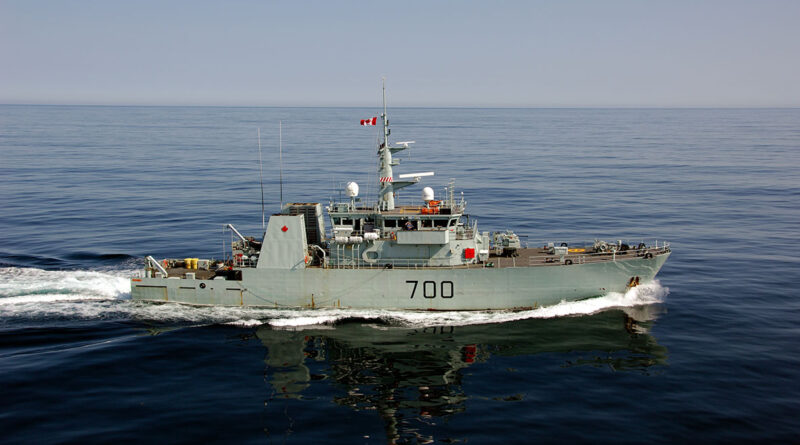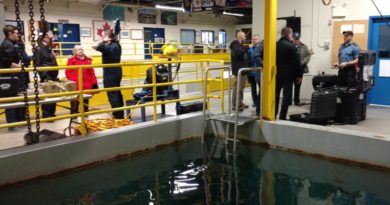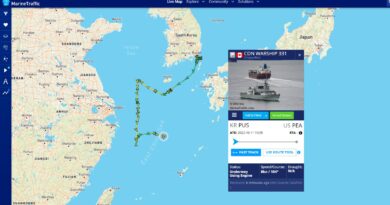Kingston-class Ships – Less than meets the eye
By SWD Swan
There was a recent social media post in which a Royal Canadian Navy (RCN) commanding officer proclaimed his excitement about deploying on a NATO mission. That’s expected and appropriate, except that he was excited about the deployment of two Kingston-class ships to the Baltic in what may be a mine warfare/mine counter measures (MCM) role. The MCM capability comes by dropping a container on the stern of the ships. That is the equivalent of putting a gun on the back of a pickup truck and calling it an ‘armoured fighting vehicle’. No Canadian soldier would ever make that mistake, and no Canadian sailor should ever mistake a Kingston-class ship for an MCM platform. It’s time the Navy admitted what the Kingston-class is, and is not.
Origins of the Kingston-class
In the 1980s the RCN had more tasks than it had ships and sailors. Although the fleet was aging (rusting out), the most outstanding deficiency was in coastal/sovereignty operations. Although the RCN had some coastal and inshore vessels1, none of them had weapons, sensors or any significant operational capability. The Naval Reserve (NR) was in somewhat better shape. The transit of HMCS Porte Dauphine from Halifax to Esquimalt in 1978, her tasking as on-call search and rescue (SAR) asset to the Herring Roe fisheries in winter 78/79 and her coastal deployment in 1979 (Esquimalt to San Francisco to Juno Alaska and return Esquimalt) demonstrated that Reserve crews could successfully do a lot more than they were being asked to.
Commodore (Cmdre) A.C. MacMillian was appointed, first to run a Command and Control test2 and then as head of the Maritime Coastal Defense (MCD) Project in spring 1987. His project officers were Captain(N) [Capt(N)] Len Cavan and Commander Russ Wilcox. Major input to the project was provided by Capt(N) Delucca, Deputy Chief of Staff, Doctrine and Plans, Maritime Command.3 The concept created by the Cmdre and his staff envisioned two ship types: an Inshore Surveillance Vessel (ISV) and a Coastal Surveillance Vessel (CSV). ISV would be tasked to conduct surveillance and security operations out of ports, harbours and inshore waterways. CSV were intended for surveillance and security operations in the twelve to sixty nautical miles range.4
The 1987 Defense white paper was a game-changer for the project.5 Aggressively attacked by the opposition Liberals, the White Paper was panned by many political observers as out of touch with the real world and generally unnecessary. Unfortunately that meant that the Conservative Party, the government of the day, would scale down project plans for the 3,300 Naval Reserves and ‘Minor War Vessels’. The Navy’s plans and the concepts in the White Paper would mostly be allowed to lapse. Only one type of ship would be constructed and other plans would be constrained due to lack of funding.
Changes of Concept and Specification
The two consortiums that bid on the government’s Request for Proposals drew concepts from the MCD Project and the Defence White Paper. It must be noted that the RCN had retired its mine warfare capabilities more than 25 years previously and there was no mine counter measures expertise to draw on. Further, both consortiums claimed they merged the ISV and CSV concepts. In the end, no standards or concepts were met, not the ISV, CSV nor MCM. To quote the editor of Maple Leaf Navy:
“SNC-Lavalin was contracted to provide twelve training vessels built to a unique civil design. As a civil design, they had almost no combat capability as they were not built to withstand stresses from explosive events.”6
As distressing as his assessment is, it is understated. The RCN’s focus has always been on blue-water issues such as interoperability with the US Navy. The Kingston-class rarely received the attention required to operate the ships. No effort was made to fit appropriate weapons and sensors. Personnel policies were never adjusted to ensure that there were enough ships supporting Naval Reserve training as well as meeting the many outstanding naval tasks.
The claim has been made that the Kingston-class are MCM vessels. The Kingston-class lacks the communications and designed ability to withstand shock to be a true MCM platform. Some MCM capabilities were created and used – for a few years. Some of those capabilities were in containers that could be installed on the ships. The MCM capability was never given enough support for sailors to develop and maintain expertise. Normal operations for the class were without MCM capability. Since MCM skills are highly perishable, the vision of a standing MCM capability was never achieved.
The containers used to house additional personnel and provide additional operational capability are less than advertised. Personnel containers house few personnel, smell, are prone to condensation and lack adequate air-conditioning.
The Navy ignored the ships’ limitations. HMCS Glace Bay was ‘away from home port’ more than 300 days during its first year. The Navy had tasks and a new class of ships, so ships were deployed. Personnel demands on the Naval Reserve were high, but baseline personnel policies were never changed or adapted. Ultimately a number of the ships were manned by the Regular Force.
Recent History
In recent years the RCN has lacked enough destroyers and frigates for tasks assigned. To replace them, Kingston-class ships have been tasked with overseas missions. Recent tasks include anti-piracy operations off Africa and anti-drug operations off South America. Although the ships successfully completed their missions, it’s worth pointing out that many pirates and smugglers have weapons with more range and capability than the Kingston-class ships. If there had been a battle with smugglers, the ships would probably have been damaged – or sunk. The ships were never designed for combat.
Twenty-five years later, we are deploying two Kingston-class ships to the Baltic. They have no weapons. They have no sensors. They are not designed to take shock damage. One operational task being considered is mine warfare. This is a task which inherently risks shock damage. The ships only redeeming quality are their sailors. Like their predecessors in the Naval Reserve-manned gate vessels, Kingston-class sailors continue to get more out of their ships than anyone should expect.
Conclusion
1. The Kingston-class ships are only marginally ‘warships’.7 8
2. The Kingston-class ships are worn-out (from over use) and rusted-out (at the end of their reasonable life expectancy).
3. The Kingston-class ships are an embarrassment to the RCN and the country. The ships deserve to be retired, preferably scrapped. The Navy deserves to be embarrassed for its neglect of a class of ships and the Naval Reserve. The government deserves to be embarrassed for its woeful neglect of the Navy.
Notes:
[1] The RCN had five ‘gate vessels’ or Porte-class ships, HMCS Fort Steele (former RCMP vessel) and two former Canadian Coast Guard SAR vessels, Rapid and Rally. There were also some dive tenders and harbour craft.
[2] The Command and Control test was part of Naval Control of Shipping exercise ‘Summer Express 86’ which was followed by a project at Queen’s Harbour Master Halifax.
[3] None of the project officers had experience with the Naval Reserve. Capt(N) Delucca did have Lieutenant-Commander (LCdr) Mike Hodgson on his staff, however, he was only occasionally consulted. The first MCD Project staff officer was Lieutenant(NR) David Swan, however, like LCdr Hodgson, he was rarely consulted.
[4] Project staff thinking was that tasks for CSV would include: fisheries patrols, anti-smuggling patrols, coastal sovereignty and SAR.
[5] Challenge and Commitment: A Defence Policy for Canada (June 1987) https://publications.gc.ca/collections/collection_2012/dn-nd/D2-73-1987-eng.pdf accessed 1 August 2023
[7] Review of the Kingston Class – Worth Keeping? https://www.mapleleafnavy.com/index.php/2023/06/24/review-of-the-kingston-class-worth-keeping/ accessed 1 August 2023
[7] Reference: Cambridge Dictionary: “a ship supplied with guns, for use in war.” https://dictionary.cambridge.org/us/dictionary/english/warship accessed 1 August 2023
[8] Reference: Britannica: “warship, the chief instrument by which military power is projected onto the seas. Warships protect the movement over water of military forces to coastal areas where they may be landed and used against enemy forces; warships protect merchant shipping against enemy attack; they prevent the enemy from using the sea to transport military forces; and they attack the enemy’s merchant shipping. Naval ships are also used in blockade—i.e., in attempts to prevent an enemy from importing by sea the commodities necessary for prosecution of the war. In order to accomplish these objectives, naval ships have been designed from earliest times to be faster and sturdier than merchant ships and to be capable of carrying offensive weapons.” https://www.britannica.com/technology/naval-ship accessed 1 August 2023
David Swan is a retired officer of the Canadian Armed Forces. He was a staff officer on the Maritime Coastal Defence Project, January 1987 to June 1988.
Photo: Canadian Armed Forces



